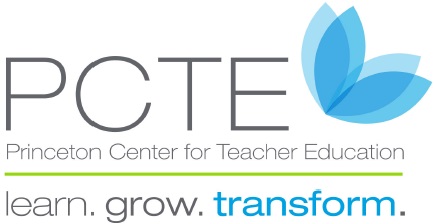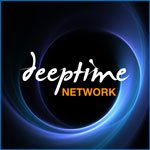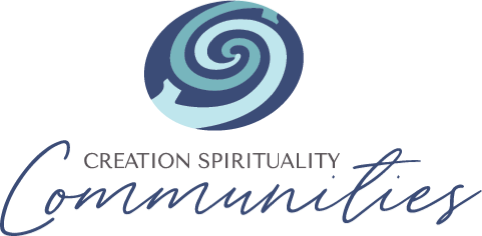-
Michael Duffy replied to the topic Montessori Cosmic Education and the Planes of Development in the forum Deep Time Journey Forum 9 years, 10 months ago
Kyle makes a very valid point about the need for the middle school / high school Montessori level to put sufficient emphasis on the intellectual content of Cosmic Education. We can’t assume that even those students coming from Montessori elementary are totally familiar with the details of the Cosmic Education story that helps them unify all their learning. And students at this higher level can achieve a much deeper understanding of the elements of the various chapters of the story. As Kyle rightly notes, we shouldn’t let academic pressures distract teachers or students from the goal of putting all knowledge into the context of the Cosmic Education / Big History narrative. That said, it is appropriate to look for practical applications of the lessons of Cosmic Education for students at this level, as Betsy notes.
Search Forum
Courses
Sponsors
 Our Vision is to ignite our sense of connectedness with Earth and nurture a spirituality of Earth care through learning circles.
Our Vision is to ignite our sense of connectedness with Earth and nurture a spirituality of Earth care through learning circles.
 Gladwyne Montessori is an independent Montessori school on Philadelphia’s Main Line.
Gladwyne Montessori is an independent Montessori school on Philadelphia’s Main Line.
Gladwyne Montessori
 Committed to guiding adults in their journey as they discover the truths about childhood and study Montessori pedagogy. Personal growth and deep understanding prepares us for success.
The result is transformative.
Committed to guiding adults in their journey as they discover the truths about childhood and study Montessori pedagogy. Personal growth and deep understanding prepares us for success.
The result is transformative.
PCTEMONTESSORI.ORG
Want to Sponsor DTN? Click here.




I am in total agreement with you, Michael (and Betsy, too!). Even given the demands of a public school setting, there are many creative ways to find practical applications for Cosmic Education, and adolescents need that kind of work to fully actualize the ideal outcomes of this plane of development. No amount of intellectual exercise can substitute for the practical exercise of Cosmic Education. Adolescents need to take their Cosmic work to a bigger level, one in which they take on adult-like responsibilities as a kind of initiation into adult life. They need to be empowered, and they need to see how important their contribution is to the supranature of mankind, both intellectually and practically. My intention was not to suggest that we jettison the practical, but rather be realistic about what the practical applications might look like in a public school setting. Additionally, we need to ensure that we preserve the intellectual side of Cosmic Education at this level, too. It is a fundamental element in maintaining enthusiasm for learning at an age when all of the pressures make education seem burdensome and even meaningless. Thank you for elaborating on this topic, Michael!
Cosmic education in Montessori is a spiral curriculum. We carry forth the sensorial experiences of first plane to the elementary plane and then take both the sensorial and intellectual work to the adolescent programs. In our adolescent programs and teacher education course we revisit all the great lessons again each year from different perspectives and especially with a focus of the past with gratitude for all that came before us, the present impact we can make (personal responsibility), and our legacy for the future. There are several different programs available on the internet that support this work with adolescents like Big Picture History and 100people.com.
That’s great that your training program for adolescent teachers has such a strong focus on Cosmic Education! I’ve always wanted to get away to Houston and take that training, as I’ve heard it is the best in the country.
My personal experience with Montessori training was enlightening and inspiring, but in my mind, we did not spend enough time on the big picture of Cosmic Education.
But my main point is not really about training, as Montessori teachers should continue their training on their own and so can come to fully understand the importance of the Cosmic Curriculum regardless of how much their training emphasized it.
Rather, my main point is that the Montessori community must begin to seriously consider the unique and challenging needs of public middle and high school Montessori programs and offer them more support in the practice of reconciling state-mandated course descriptions and standards with Montessori philosophy. Those of us with Montessori training understand very well the concept of the spiral curriculum and why Erdkinder is ideal for the adolescent. Despite our best efforts, though, there are sacrifices being made, both in the practical and intellectual realm. Some of them need to made, some do not.
I believe there needs to be more direct support for these public schools and teachers, whether through training or conference speakers or more articles in Montessori Life, in developing creative ways to satisfy the strictly academic demands of the state (and parents) while staying as true to Montessori philosophy as possible.
My main goal right now with my colleagues is to infuse our courses with Big History in order to tie them all together and continue the Cosmic Curriculum at our level. This is just one tool of many, though, and I hope that soon the Montessori community begins to more thoroughly address the needs of public schools doing this work. Perhaps this support is out there more than I realize, but in the schools I’ve visited, in the many Montessori conferences I’ve attended, and in my own experience with training and in 10 years of teaching in this setting, there’s not much being said about public high school programs.
My hope is that we can begin to have a stronger presence in the Montessori world and link in to the strong network of professionals in this field who can really help us retain Montessori integrity and bring this powerful education to the public setting where it can benefit a much wider population of families who cannot afford private school.
Kyle, you are obviously very frustrated with the demands that your school district makes on your program. There is work to be done at every level of Montessori when it comes to navigating the testing culture. The National Center for Montessori in the Public Sector (www.public-montessori.org) supported by AMS and AMI has been formed to advocate for Montessori publically funded schools be more authentic. I have adolescents programs that have navigated it with their school district well and others who struggle. In my experience Montessori organizations or teacher education programs usually cannot tell a school district what to do unless they are a current practicum site. That is why in 1990 David Kahn and I wrote a document call Essential Elements of Successful Montessori Schools in the Public Sector which all Montessori organizations endorsed. It needs to be updated which I believe the National Center will be doing. The last AMS conference in Dallas, which I co-chaired had two adolescent workshops options at each time period so as the number of adolescent programs grow there are more and more opportunities for more resources as you suggested we need. I believe the Montessori community is working on it; it is frustrating when we trying to change the paradigm of educational values.